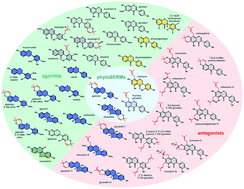Prenylated isoflavonoids from plants as selective estrogen receptor modulators (phytoSERMs)
Abstract

* Corresponding authors
a
Laboratory of Food Chemistry, Wageningen University, P.O. Box 8129, Wageningen, the Netherlands
E-mail:
jean-paul.vincken@wur.nl
Fax: +31 317 484893
Tel: +31 317 482234/2888
b Frutarom Netherlands BV, Galvanistraat 1, Ede, the Netherlands
c RIKILT-Institute of Food Safety, Wageningen University and Research Centre, P.O. Box 230, Wageningen, the Netherlands

 Please wait while we load your content...
Something went wrong. Try again?
Please wait while we load your content...
Something went wrong. Try again?
R. Simons, H. Gruppen, T. F. H. Bovee, M. A. Verbruggen and J. Vincken, Food Funct., 2012, 3, 810 DOI: 10.1039/C2FO10290K
To request permission to reproduce material from this article, please go to the Copyright Clearance Center request page.
If you are an author contributing to an RSC publication, you do not need to request permission provided correct acknowledgement is given.
If you are the author of this article, you do not need to request permission to reproduce figures and diagrams provided correct acknowledgement is given. If you want to reproduce the whole article in a third-party publication (excluding your thesis/dissertation for which permission is not required) please go to the Copyright Clearance Center request page.
Read more about how to correctly acknowledge RSC content.
 Fetching data from CrossRef.
Fetching data from CrossRef.
This may take some time to load.
Loading related content
